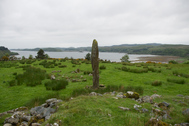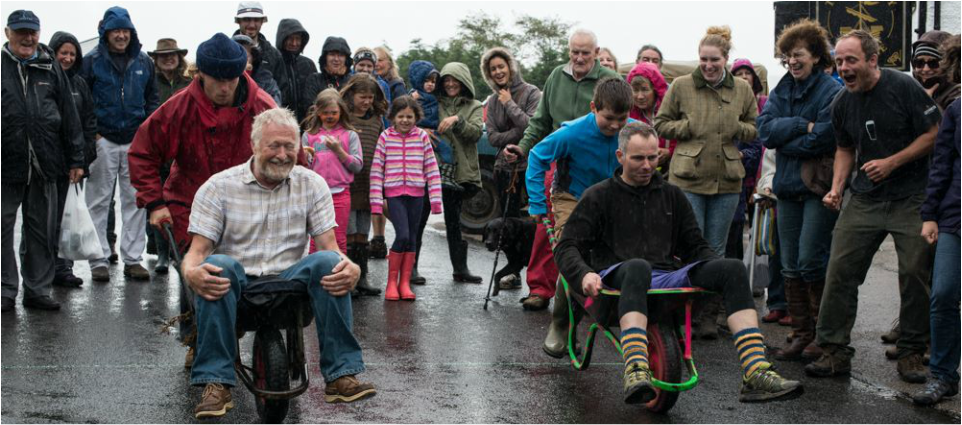History

Mid Argyll has one of the highest concentrations of iron age remains in the whole of Europe. On the Craignish Peninsula you can discover ruined forts, standing stones, cairns and the mysterious cup and ring marks.
We can trace the peninsula´s history back to the 7th century when Celtic missionaries moved into the area, including the ´Red Monk´, Maol Rudh, a kinsman of St. Columba from Bangor. The chapel at Kilvaree (where the graveyard is,on the way to Craignish Point) is dedicated to him. The now ruined chapel is the oldest building in Craignish. In the shelter at the west end there is a beautiful collection of medieval grave slabs.
We can trace the peninsula´s history back to the 7th century when Celtic missionaries moved into the area, including the ´Red Monk´, Maol Rudh, a kinsman of St. Columba from Bangor. The chapel at Kilvaree (where the graveyard is,on the way to Craignish Point) is dedicated to him. The now ruined chapel is the oldest building in Craignish. In the shelter at the west end there is a beautiful collection of medieval grave slabs.

The Vikings arrived in the late 8th century and some of the consequent battles that were fought are commemorated by a number of cairns at Bagh dal nan Ceann (´Bay of the Field of Heads´, on the west coast below Gemmil) and in the Barbreck Glen. At Drumrigh, (the King´s ridge behind Barbreck House) the army of the Danish King Olaf is said to have been defeated by the Scots. A standing stone, and cairn - known today as ´The Danish King´s Grave´is clearly visible from the main road on the bealach above Kintraw
By the time the Vikings left in the 13th century, the area was know as both Kilvaree and Chreiginis which means ´rocky headland´ in Norse. Parts of the current chapel at Kilvaree and the core Craignish Castle keep date to the 12th Century. This keep was not finally roofed until about 1546, around the same time that Daill tower house was built, now substantially rebuilt and known as Lunga House
For hundreds of years the area was owned by the Campbells of Craignish. In the late 18th Century, starting with the sale of the central section of the point, Daill, to John McDougall of Lunga, Craignish was gradually sold off culminating in today´s patchwork of farmlands.

In the 17th century, Ardfern, which means Álder Point´emerged. There was already an inn where the Galley of Lorne is today, serving drovers from Islay and Jura who swam their herds across the Firth of Lorne then headed on to mainland markets like Crieff and Falkirk.
The abandoned pier towards the end of the peninsula is well worth a visit for stunning views and walks.
In 1692 the chapel at Kilvaree was abandoned and a new ´preaching house´built at Soroba Farm. In 1698 a more substantial building went up on the site of the present church but this fell into disrepair and the present church was completed in 1826. In the mid-19th century there were also two private chapels set up, at Lunga and Craignish, as well as a free church opposite the boatyard which had a hall for events - the forerunner of our village hall.
The first reference to a school was in 1698. Lessons were probably given in the schoolmaster´s house, which is still situated next to the school and is the oldest residential building in the village. The existing school house was built by Colonel Gascoigne, then owner of Craignish Castle. In 2011, a new wing was added to accomodate the increasing school roll.

The greatest change in recent times has been the development of Craobh Haven (pronounced
´Croove´and meaning ´tree´) on the west side of the peninsula.
The land, which was originally part of the Lunga Estate was sold in 1983 and there is now a growing resident population and a flourishing marina and pub.
´Croove´and meaning ´tree´) on the west side of the peninsula.
The land, which was originally part of the Lunga Estate was sold in 1983 and there is now a growing resident population and a flourishing marina and pub.
In 1724 the population of the Craignish Peninsula was 1000; by 1881, this had dropped to 451. By the 1940s there were only 65 houses and 200 people living here. In recent times the population has started to increase again and we are now a thriving and very lively community with over 350 residents. This is us at the annual wheel barrow race!


